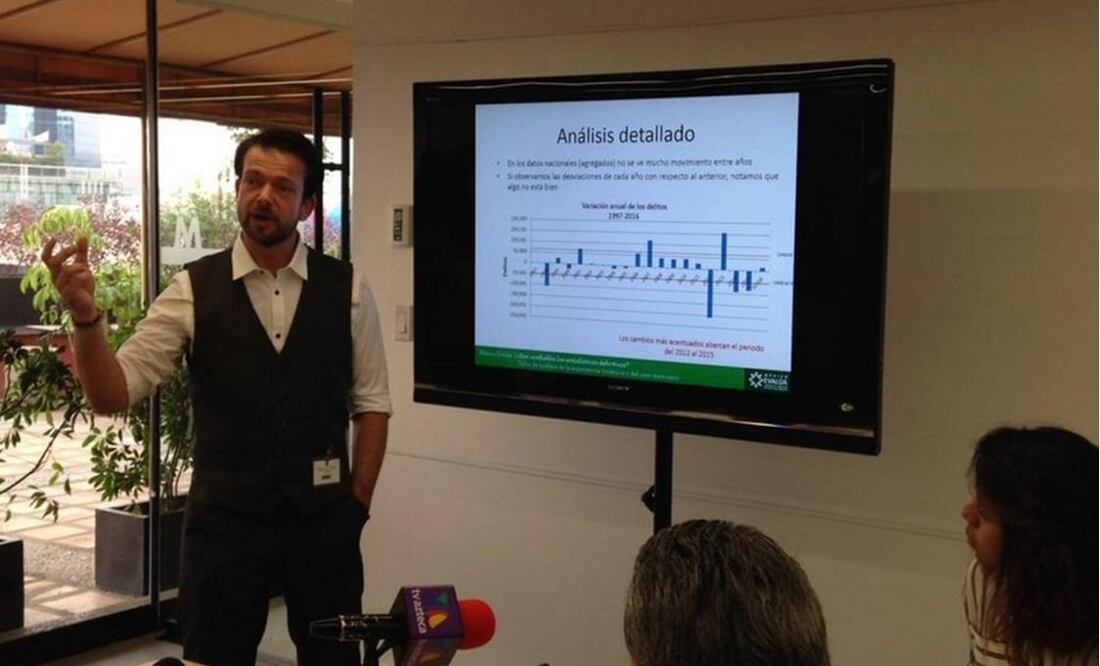Más Información

Declaran juicio nulo en caso de Fátima, niña de 7 años, víctima de feminicidio; “esto es un mensaje de impunidad para los agresores”

Aplazan dictamen para discusión de dictamen; Adrián Alcalá asegura que hay tiempo para construir agencia de acceso a la información
Crime data provided by Mexico's federal government is regularly manipulated to make it seem like there is a decrease in high-impact crime, according to the nonprofit statistics agency México Evalúa.
According to a recent presentation on a preliminary study being conducted, over the last 20 years, state attorney general's offices have “inflated” data for low-impact crime in order to make it seem like there is a decrease in high-impact crimes, such as kidnappings and intentional homicide.
“There is an overall manipulation in data in all states in Mexico concerning all crimes,” said James Patrick, an ex-police officer for the Scotland Yard in London, who's currently helping México Evalúa conclude its investigation on how data is analyzed in Mexico.
He also said that it's necessary to create awareness in order to deter people from manipulating information because high numbers in crime isn't necessarily a bad thing, it usually means that things are actually getting done.
In other words, the data reported by Mexico's National Public Safety System correspond to the number of crimes that are reported, but it's the “black” data—crime that goes unreported—that's the true indicator of criminal activity and the government should be using that data to influence public policy on fighting crime, not incorrect or manipulated data.
The organization analyzed the data dating as far back as 1997 and through today, then James Patrick conducted another analysis based on his experience in the UK using data, without being told what state they came from in order to avoid any bias in his analysis.
The specialists confirmed that according to the data reported by the National Public Safety System, the country's homicide rate is about to be as high as it was during the last administration, which was the highest in the country's history.
“In the last two years, the homicide rate between 2014 and 2016 is growing at its fastest rate during that period. We're basically just 200 homicides shy from reaching the worst period in Felipe Calderón's administration,” said Jonathan Furzsyfer, coordinator of México Evalúa's Security Program.
To put this into perspective, in May 2011 there were 2,131 reported cases of intentional homicide in the entire country, while in September of this year there were 1,974, which is hardly an improvement by any means.
Furzsyfer explained that this manipulation in data is due to the fact that there are all kinds of incentives at all levels in the government for doing so. For example, police officers manipulate information to meet quotas and politicians do the same to win votes.
Edna Jaime, the General Director of México Evalúa, said that given this situation, the organization's recommendation is for the government to create an autonomous agency that audits crime data in order to detect bad practices and implement standardized, country-wide criteria and technology.








